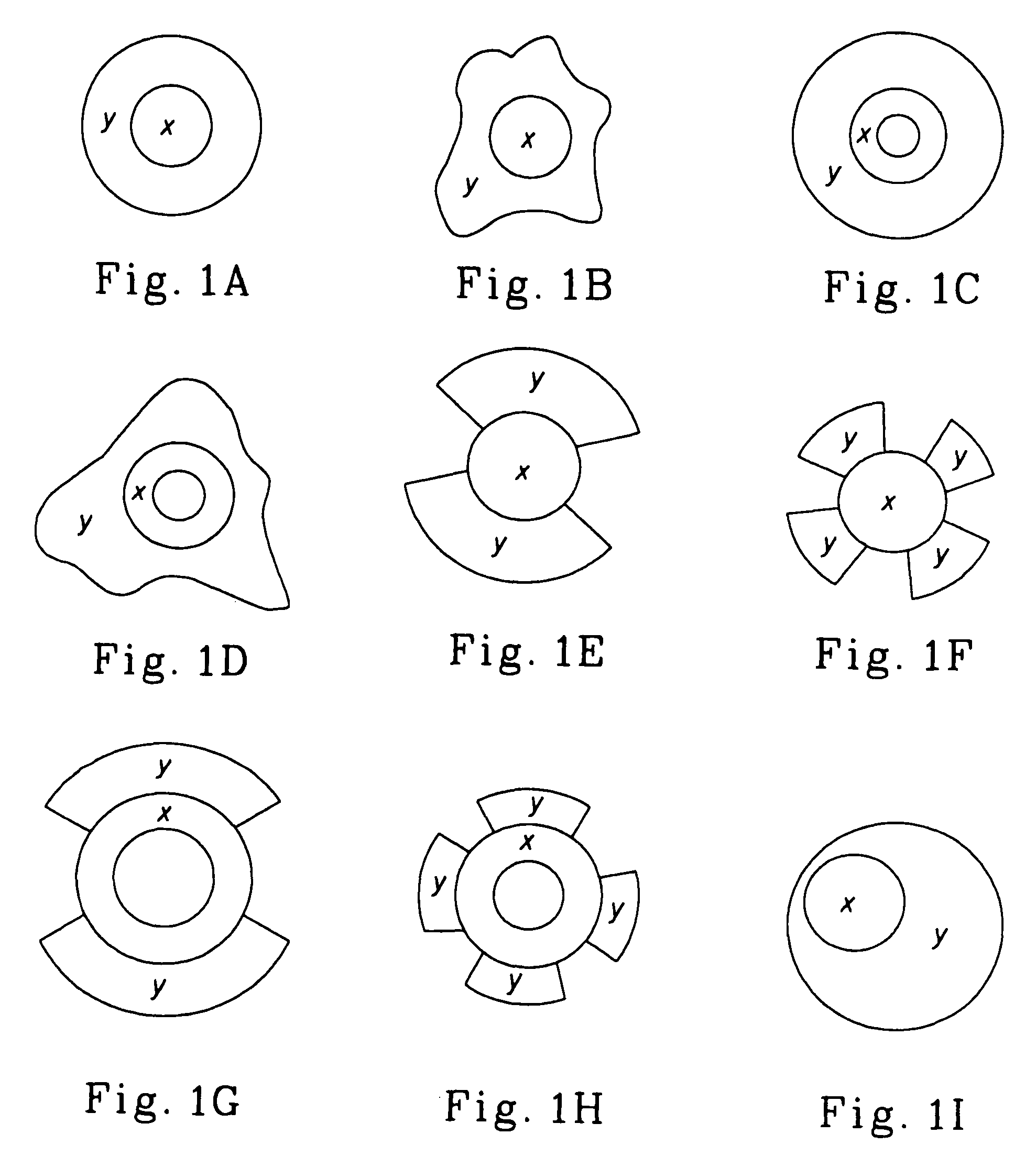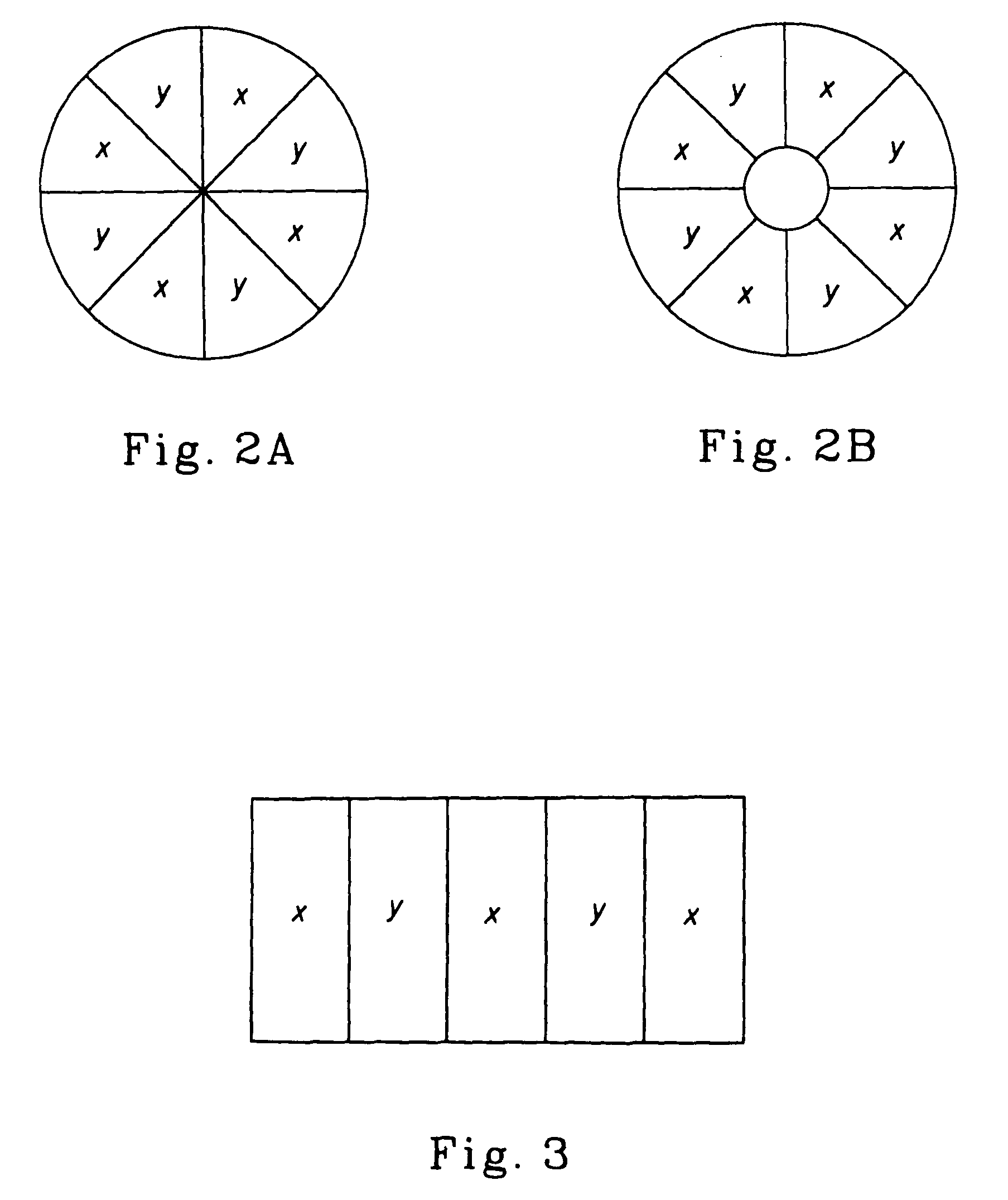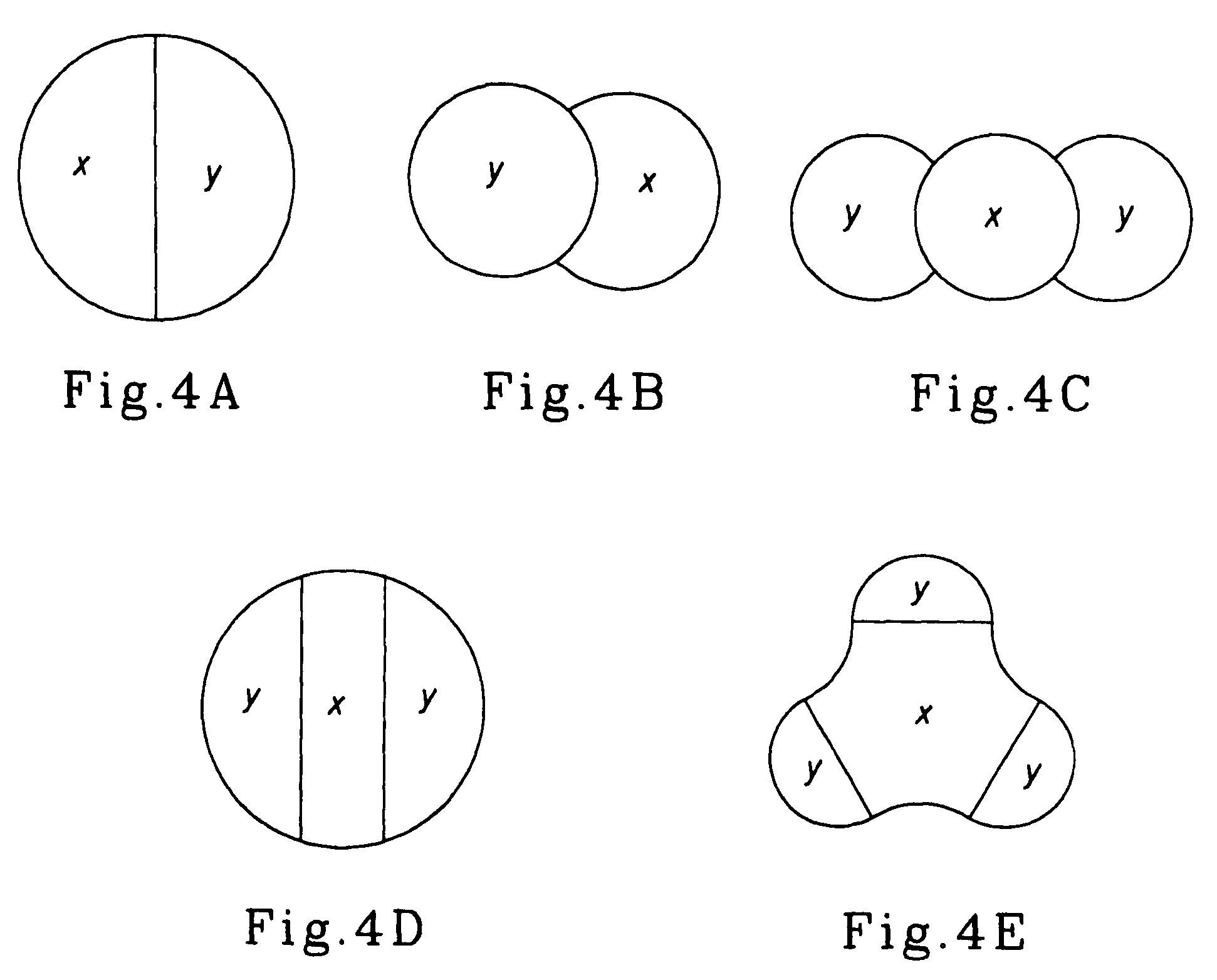Multicomponent fibers comprising starch and polymers
a technology of multi-component fibers and polymers, which is applied in the field of multi-component fibers comprising starch and polymers, can solve the problems of limited number of options, difficult production of useful fibers for non-woven articles, and limited processability of many compositions
- Summary
- Abstract
- Description
- Claims
- Application Information
AI Technical Summary
Benefits of technology
Problems solved by technology
Method used
Image
Examples
example 1
[0124]Sheath-core bicomponent fiber: The blend for the core is compounded using 70 parts StarDri 100, 10 parts polyethylene and 30 parts sorbital. The blend for the sheath is compounded using 67 parts low density polyethylene, 19 parts StarDri 100 starch, 10 parts PCL and 4 parts glycerol. Each ingredient is added concurrently to an extrusion system where they are mixed in progressively increasing temperatures. This procedure minimizes the thermal degradation to the starch that occurs when the starch is heated above 180° C. for significant periods of time. This procedure also allows the starch to be fully destructured before intimate mixing with the thermoplastic materials.
example 2
[0125]Sheath-core bicomponent fiber: The blend for the sheath contains polypropylene. The blend for the core is compounded as in Example 1 using 66 parts polypropylene, 20 parts StarDri 100, 9 parts PCL, and 5 parts glycerol.
example 3
[0126]Hollow eight segmented pie bicomponent fiber: The blend for the first segment contains polyethylene. The blend for the second component is compounded as in Example 1 using 70 parts StarDri 100, 10 parts polyethylene and 30 parts sorbital.
PUM
| Property | Measurement | Unit |
|---|---|---|
| diameter | aaaaa | aaaaa |
| diameter | aaaaa | aaaaa |
| melting temperature | aaaaa | aaaaa |
Abstract
Description
Claims
Application Information
 Login to View More
Login to View More - R&D
- Intellectual Property
- Life Sciences
- Materials
- Tech Scout
- Unparalleled Data Quality
- Higher Quality Content
- 60% Fewer Hallucinations
Browse by: Latest US Patents, China's latest patents, Technical Efficacy Thesaurus, Application Domain, Technology Topic, Popular Technical Reports.
© 2025 PatSnap. All rights reserved.Legal|Privacy policy|Modern Slavery Act Transparency Statement|Sitemap|About US| Contact US: help@patsnap.com



